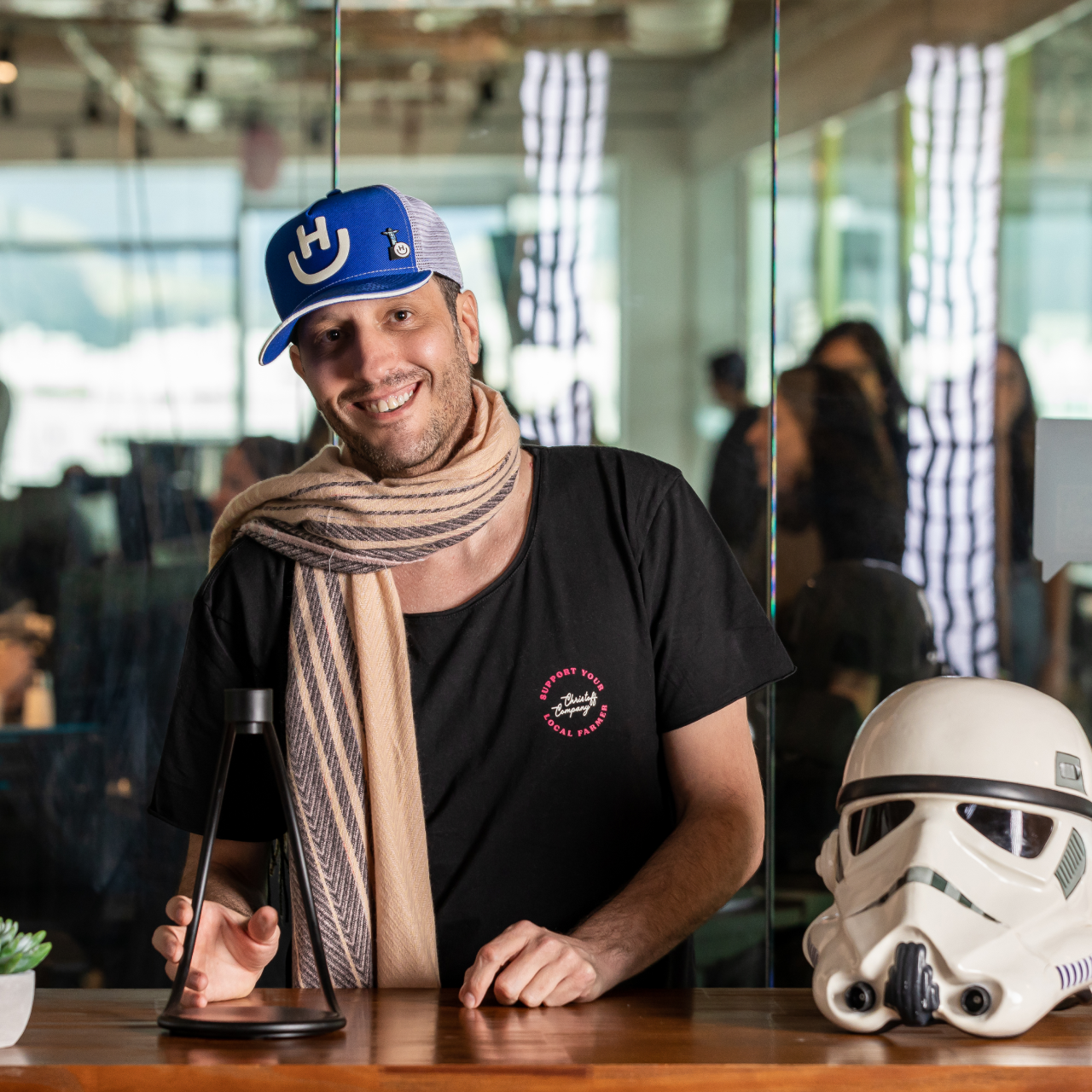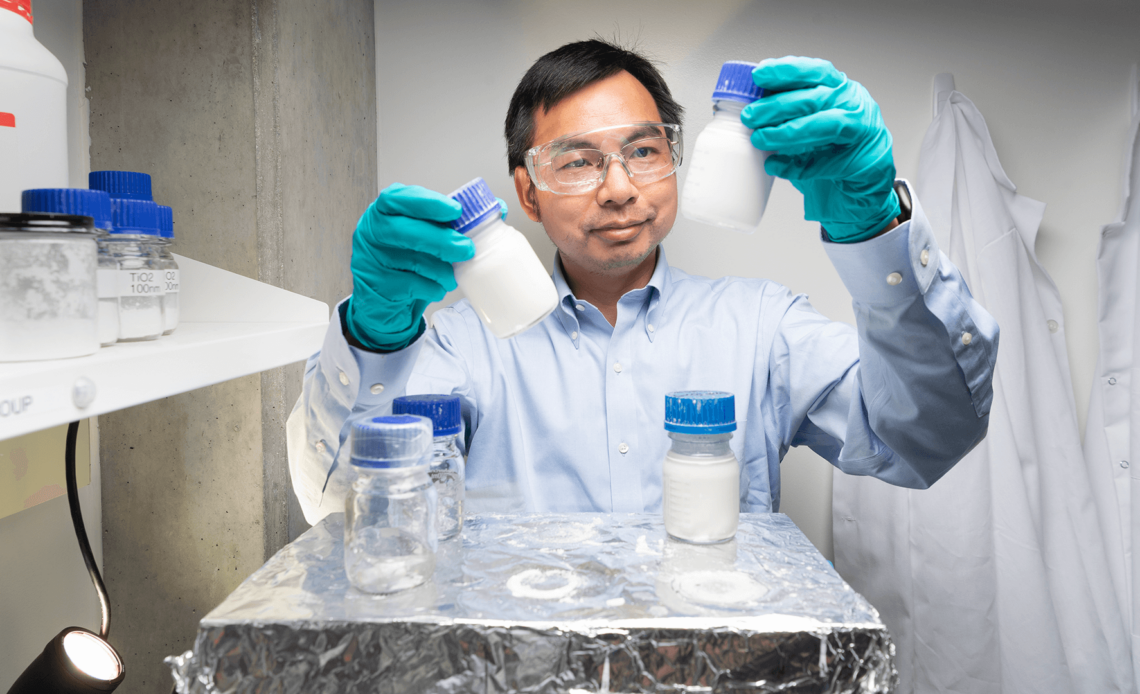Project Santorini
New White Paint from Purdue University and the Partnership with Loon Factory to Revolutionize Well-being in Areas of Extreme Poverty.
Amid the relentless struggle against global warming, an engineering breakthrough emerges as a beam of light reflected on the ceiling of our hopes. Engineers from Purdue University, aware of the urgent imperative to find sustainable solutions for urban cooling, have developed the whitest paint ever recorded. This innovation promises a revolution in how we deal with heat in urban areas, potentially drastically reducing the need for air conditioning systems.
Development:
Research conducted by the Purdue University team revealed paint so pure white that it surpasses everything we knew about pigments and their functionality. The new formulation not only reflects an extraordinary amount of sunlight but also cools surfaces to temperatures lower than the surrounding environment. Applying this paint on a 1,000-square-foot roof could translate to a cooling effect of 10 kilowatts, equivalent to the performance of central air conditioning units serving typical residences.
More than a laboratory phenomenon, this development is about to be tested in practice. João Ricardo Mendes, founder of Hurb and a sustainable innovations enthusiast, announced a pioneering collaboration with Purdue University. Through Loon Factory, the entrepreneur's R&D incubator, the Santorini Project will be launched in early 2024 to transform Morro do Vidigal in Rio de Janeiro.
Project Santorini: An Urban and Sustainable Odyssey
Named in honor of the famous Greek island known for its whitewashed houses reflecting sunlight, Project Santorini aims to coat the residences of Morro do Vidigal with innovative white paint. This initiative has the potential not only to improve the thermal comfort of residents but also to contribute to reducing energy consumption and air conditioning costs.
Social and Environmental Impact:
The choice of Morro do Vidigal as the site for this initiative is not only a matter of technological application but also a humanistic approach. "Heat not only discomforts but can exacerbate social problems like anxiety and violence," says Ruan. By offering a cooler and more comfortable environment, the Santorini Project is expected to bring tangible benefits to the community's well-being.
Conclusion:
With Mendes' commitment and the brilliance of the Purdue team, Project Santorini stands out as an example of how cutting-edge science can find a place in the daily lives of cities, addressing basic needs with creative and efficient solutions. As the world watches, Morro do Vidigal prepares to become a model of innovation and sustainability, a testament to the possibility of harmonizing technological advances with respect for the environment and improving quality of life.
Call to Action:
This is just the beginning. Initiatives like Project Santorini can serve as inspiration for other communities around the world. It is a call for innovators, researchers, entrepreneurs, and governments to join forces to implement solutions that can combat global warming practically and affordably, promoting environmental sustainability and social progress. The partnership between Purdue University and Hurb through João Ricardo Mendes demonstrates that when science and passion combine, the sky is the limit.
Purdue Engineers Create Whitest Paint to Combat Global Warming
In a revolutionary effort to curb rising global temperatures, engineers at Purdue University have made a breakthrough in material science by developing the whitest paint ever recorded. This innovation is not just a scientific achievement but also a potentially transformative solution in combating urban heating and excessive use of air conditioning.
The Science Behind the Ultra-Reflective Paint
The Purdue team, led by Professor Xiulin Ruan, was unsatisfied with past advancements. In October, they already surprised the world with incredibly white paint, and now, they have improved it even further. The latest formulation reflects up to 98.1% of sunlight and emits infrared heat, meaning painted surfaces dissipate more heat than they absorb.
Ruan highlights the cooling power of this paint, which is impressively more effective than many residential air conditioning systems. He illustrates that applying the paint on a 1,000-square-foot area could result in a cooling power of 10 kilowatts — a remarkable feat for something as simple as a coat of paint.
Nocturnal and Diurnal Effects of the Paint
In addition to its unprecedented albedo, the paint's ability to cool surfaces at night and under direct sunlight is equally remarkable. Rigorous measurements showed that surfaces painted with the paint were 19 degrees Fahrenheit cooler than their surroundings at night and 8 degrees Fahrenheit cooler during the peak solar noon.
Project Santorini: A Real-Scale Case Study
In an exciting fusion of science and social sustainability, João Ricardo Mendes, founder of Hurb, revealed a remarkable collaboration with Purdue University. Through Loon Factory, the research and development wing that reflects Mendes' passion and vision, a project called "Project Santorini" was announced.
This ambitious project aims to apply innovative paint on the roofs of houses in Morro do Vidigal, with the expectation that the lower temperature can contribute to the well-being of residents. Mendes acknowledges the impact of heat on living conditions, citing the relationship between higher temperatures, anxiety, and violence.
Potential Impact and Next Steps:
With the initiative scheduled to begin in early 2024, Project Santorini will not only test the paint's effectiveness on a large scale but also become a model for future climate-centered urban interventions. The benefits of such an initiative may go beyond mere thermal comfort, offering significant reductions in energy consumption, carbon emissions, and living costs for residents.
Purdue University and Hurb are, therefore, at the forefront of an initiative that could redefine urban architecture and sustainable design. Purdue's whitest paint is not just a scientific breakthrough; it is a promise of a cooler and more sustainable future. As the world seeks solutions to the climate crisis, this painting represents a ray of hope — a literal and figurative reflection of innovation and possibility.

João Ricardo
Hurb Founder




